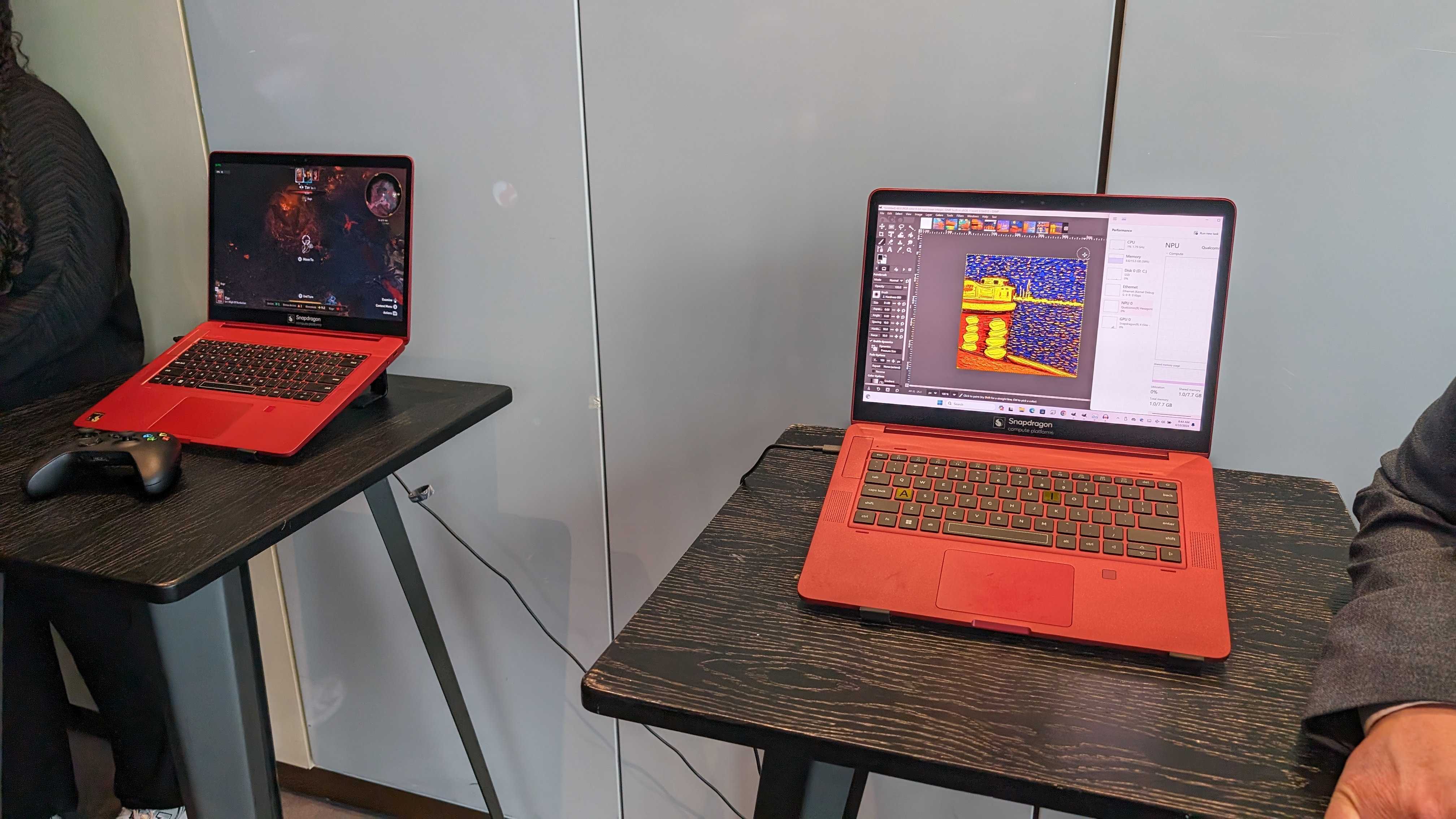Qualcomm’s new Snapdragon X Elite chips could mean better laptop battery life than ever before - but one thing worries me about these new processors
More battery life, but at a cost?

Qualcomm is gunning for Apple and Intel, with its spicy new Snapdragon X Elite chip proving very impressive when I demoed it at an event recently. Performance was excellent across the board, with special attention given to the new chip’s AI capabilities thanks to its best-in-class Hexagon NPU. But there was one thing I didn’t pay enough attention to at first glance: power efficiency.
Now, power consumption is perhaps one of the least sexy elements of microprocessor design. It’s easy to market powerful new GPU cores or hot-topic AI processing power, but that doesn’t mean good power efficiency isn’t important - in fact, in laptops, it translates directly to more battery life, which market research cited by Qualcomm indicates is the number one priority factor for people looking to buy a new device.
Qualcomm made some bold claims about the X Elite’s battery-boosting capabilities at the event I attended, stating that it could match Intel’s new Core Ultra 7 155H laptop processor in performance with just 35% of the power consumption. Sure, I already knew Intel’s chips had a reputation for guzzling battery, but that’s damn impressive - if Qualcomm’s stats prove accurate once the X Elite is actually out in the wild.
The pitfalls of this great new chip
On paper, the Snapdragon X Elite seems poised to take the laptop world by storm. Qualcomm claims that it outperforms the Apple M3 chip by almost 30% in GeekBench 6’s multi-core tests, and that it can run Microsoft’s Edge browser 57% faster than Intel’s competing 155H CPU. Qualcomm’s battery life promises include 40% more power efficiency while using Office 365 apps and less than half the battery drain during Teams video calls against the same Intel chip. If the X Elite lives up to the hype, we could be approaching a golden era of laptop longevity.
There’s one slight wrinkle in the whole affair, however, which has me spooked. No, it’s not my long-running concern about Windows on Arm (although that’s a whole other problem).

During a Q&A at the Snapdragon X Elite event, 38 floors up overlooking the London skyline, a fellow journalist asked about the scalability of the new chip. The answer we got was a little surprising: Qualcomm is confident that it can leave power regulation for the X Elite chip in the hands of third-party hardware manufacturers, with no fixed operating voltages or wattages provided by the chipmaker itself. In other words, the power drain of the X Elite could vary significantly from device to device.
This is actually a very good idea on principle, since it effectively allows Qualcomm’s manufacturing partners to tweak the Snapdragon X Elite’s capabilities at will to better suit the power demands of individual systems. A compact Chromebook with only a small battery can draw less power from the chip, while a powerhouse 16-inch ultrabook can max out power use to utilize the X Elite’s full potential.
Sign up for breaking news, reviews, opinion, top tech deals, and more.
However, this naturally means that performance could differ greatly between devices, despite them using the same chip - and that creates ripe ground for consumer confusion.
A problem without a simple solution
The key issue here is that consumers might end up misinformed about the Snapdragon X Elite’s actual capabilities. While I appreciate that Qualcomm is working to avoid baffling potential customers with confusing CPU nomenclature in the vein of Intel and AMD, at least it’s easy enough to tell at a glance that a Core Ultra 7 is more powerful than a Core Ultra 5.
With the X Elite, two devices could be running at totally different power packets, and vary significantly in performance as a result - but without any clear indication of that on a brief spec sheet, Qualcomm runs the risk of disappointing consumers. I can understand the desire to mirror Apple’s user-friendly SoC naming conventions, but Apple keeps its M-series silicon inside a tightly controlled hardware and software ecosystem. With dozens of laptop manufacturing partners itching to get their hands on the Snapdragon X Elite, the same rules don’t apply here.

However, Qualcomm doesn’t seem overly concerned about this, so perhaps I’m just being a worrywart here. When I posed a question about it, I was informed that while power delivery is left to laptop makers, Qualcomm does provide “minimum expected performance guidelines”, presumably to prevent a third-party manufacturer from bespoiling the Snapdragon name with a hideously undervolted chip.
In any case, we won’t know the real ramifications of the Snapdragon X Elite for the laptop market until it arrives in consumer laptops later this year. Personally, I’m hoping it lives up to the hype - I’d truly love for Qualcomm to dash my fears and deliver an Apple-beating standard for lightweight laptops, so I can finally stop telling people to just buy a MacBook Air.
You might also like...

Christian is TechRadar’s UK-based Computing Editor. He came to us from Maximum PC magazine, where he fell in love with computer hardware and building PCs. He was a regular fixture amongst our freelance review team before making the jump to TechRadar, and can usually be found drooling over the latest high-end graphics card or gaming laptop before looking at his bank account balance and crying.
Christian is a keen campaigner for LGBTQ+ rights and the owner of a charming rescue dog named Lucy, having adopted her after he beat cancer in 2021. She keeps him fit and healthy through a combination of face-licking and long walks, and only occasionally barks at him to demand treats when he’s trying to work from home.